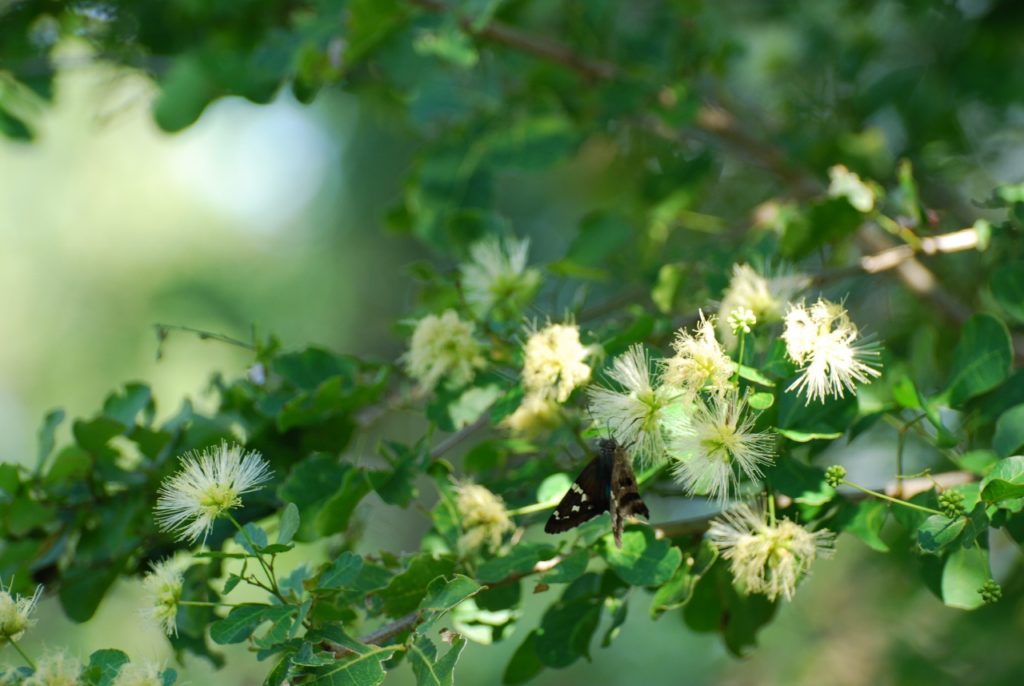
Cat’s Claw
Pithecellobium unguis-cati
Cat’s claw is native to the Florida Keys and the coast of Southwest Florida. Cat’s claw can tolerate cold throughout Palm Beach County and possibly the coast of Martin County. This is a very drought tolerant legume or bean relative that needs no special care once established.
Cat’s claw can reach 15 or more feet tall. Mounds of honeysuckle scented white flowers occur in the spring which attract many pollinators. It also blooms in December. The curly seed pod has black seeds with a red aril attached. Birds eat this aril which is not poisonous to humans although the seed is. Due to the spines on the branches and trunk, this is not to be planted near walkways unless it is trained into an upright tree with a clean trunk to 10 feet.
The larva of the Cassius Blue and the Large Orange Sulphur butterflies feed on the young leaves. It is common for the sulphur to hover over this plant as she lays her eggs during the summer months.
Cat’s claw makes an interesting specimen or can be mixed with Blackbead, Chapman’s Cassia, Wild Plumbago, Wild Lime, and other larval food plants. Plant this along the back edge or center of the butterfly garden with other plants between it and where people walk.